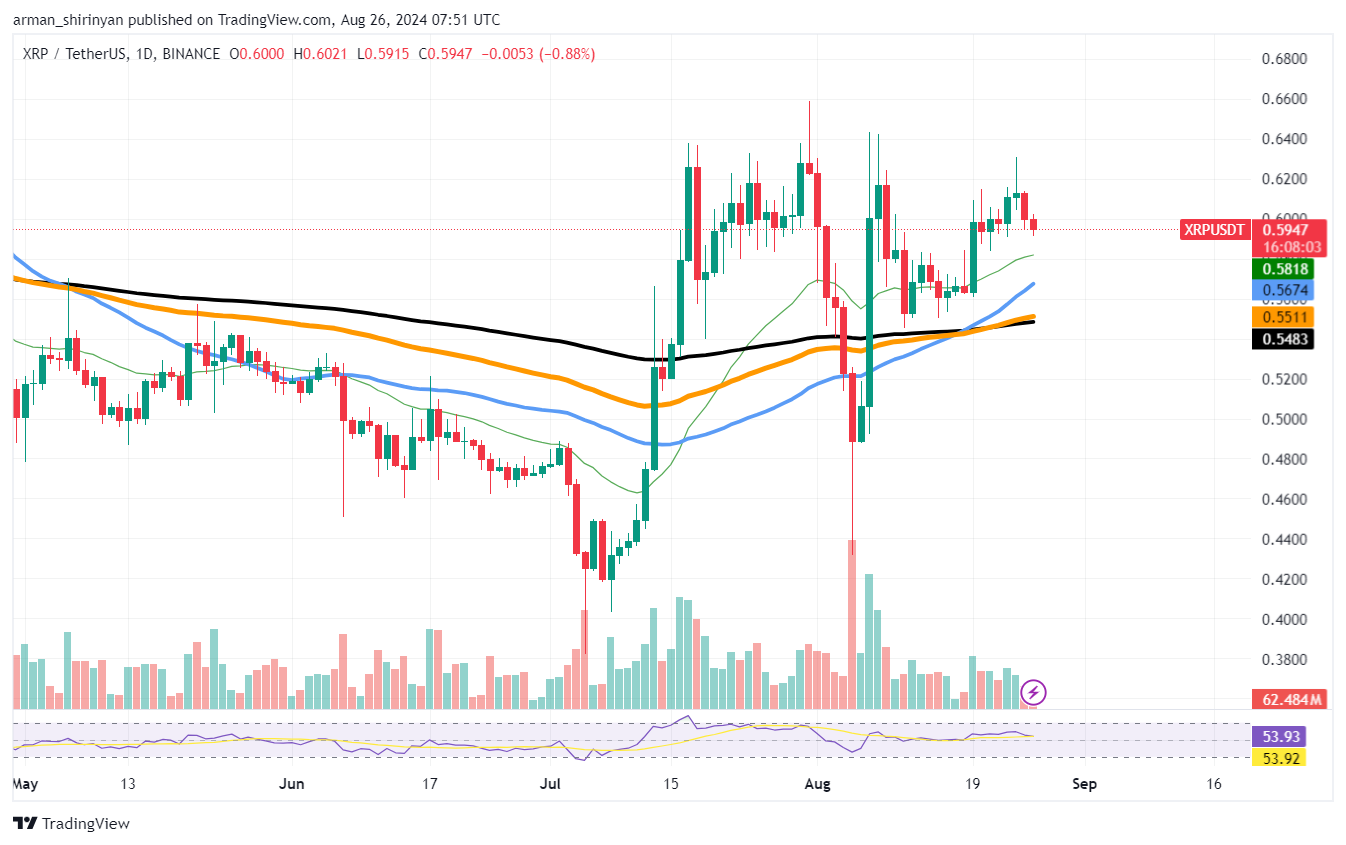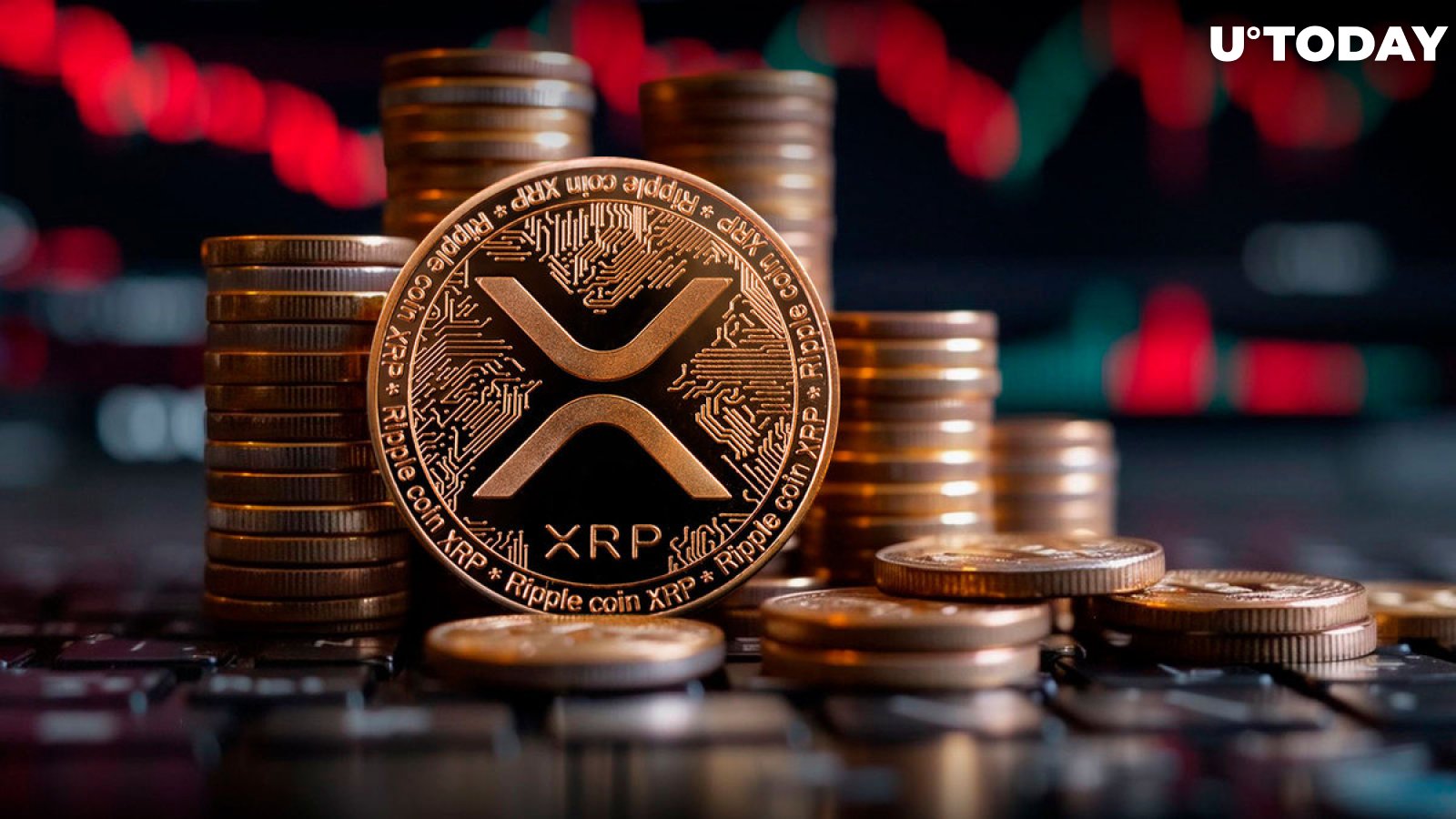Disclaimer: The opinions expressed by our writers are their own and do not represent the views of U.Today. The financial and market information provided on U.Today is intended for informational purposes only. U.Today is not liable for any financial losses incurred while trading cryptocurrencies. Conduct your own research by contacting financial experts before making any investment decisions. We believe that all content is accurate as of the date of publication, but certain offers mentioned may no longer be available.
Following its inability to breach the critical $0.62 resistance level, XRP has recently experienced a setback. This psychological barrier has shown itself to be an important roadblock for XRP, keeping the asset from continuing its recent upswing.
Due to this, the price has fallen below $0.60, a level that many traders had been keeping a close eye on. XRP has lost ground as a result of a bearish shift in sentiment brought on by the inability to maintain momentum above $0.62. As a result of the market’s current cautious outlook, the price is trading around the $0.59 mark.

This decrease highlights the subsequent crucial support levels that may dictate XRP’s near-term trajectory. Keep an eye on the $0.58 immediate support level. It will be essential for this level to hold in order to stop further declines because it has historically served as a strong support zone.
The next important support level is located around $0.55 if XRP is unable to stay above $0.58. A loss of this barrier might result in increased selling pressure and drive XRP closer to the $0.54 threshold. For XRP to resume its bullish momentum, it still needs to overcome the crucial resistance at $0.62 on the upside. If XRP can break above this barrier, it might be possible to move toward higher goals, but until then, difficulties are likely to persist.
Psychological resistance levels are often considered indicators of the sentiment around certain digital assets. Without proper breakthroughs at those levels, assets like XRP are unlikely to enter prolonged bullish cycles, which often leads to corrections or prolonged consolidation, which often pushes investors away from those assets.
Credit: Source link





